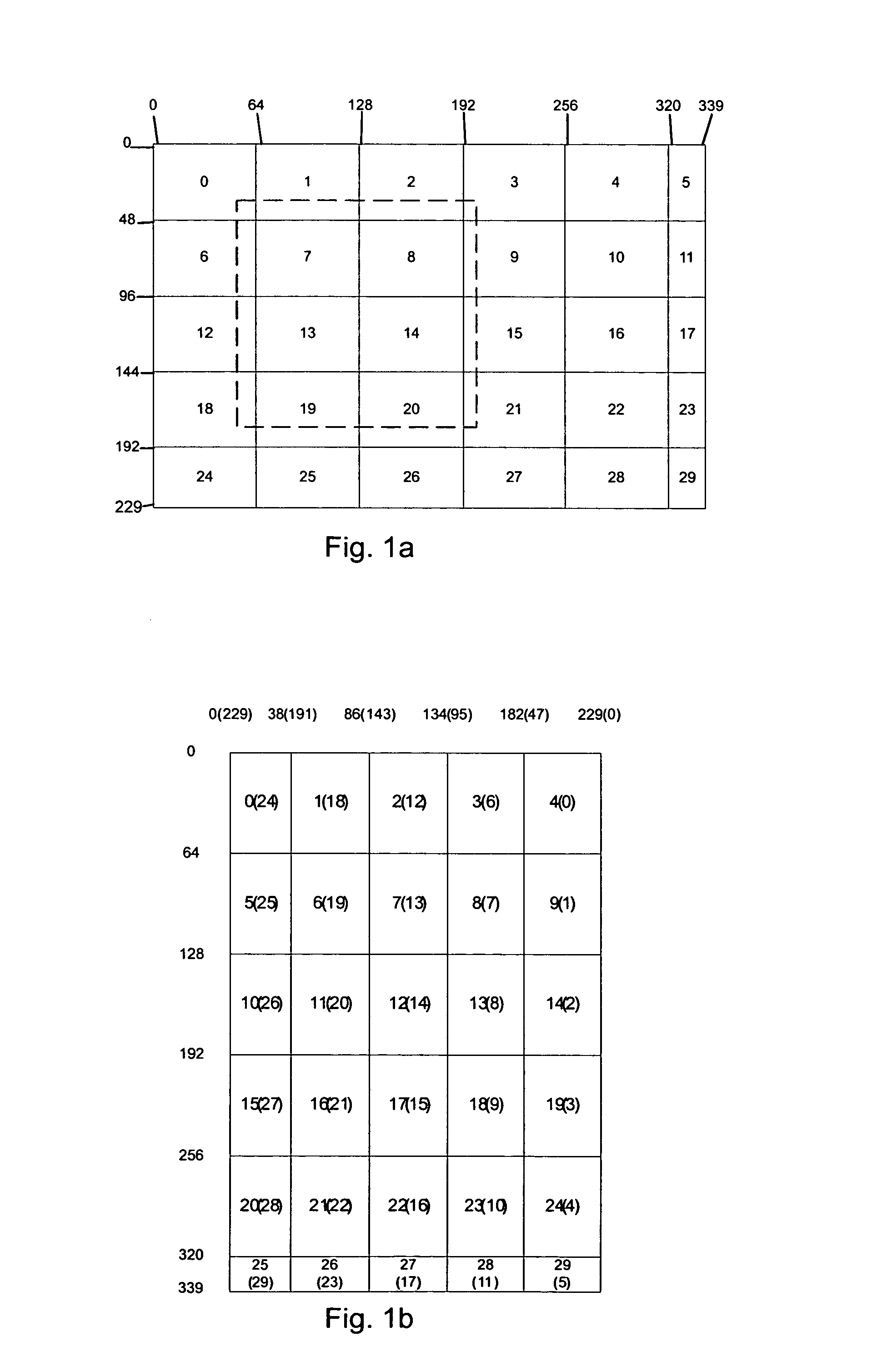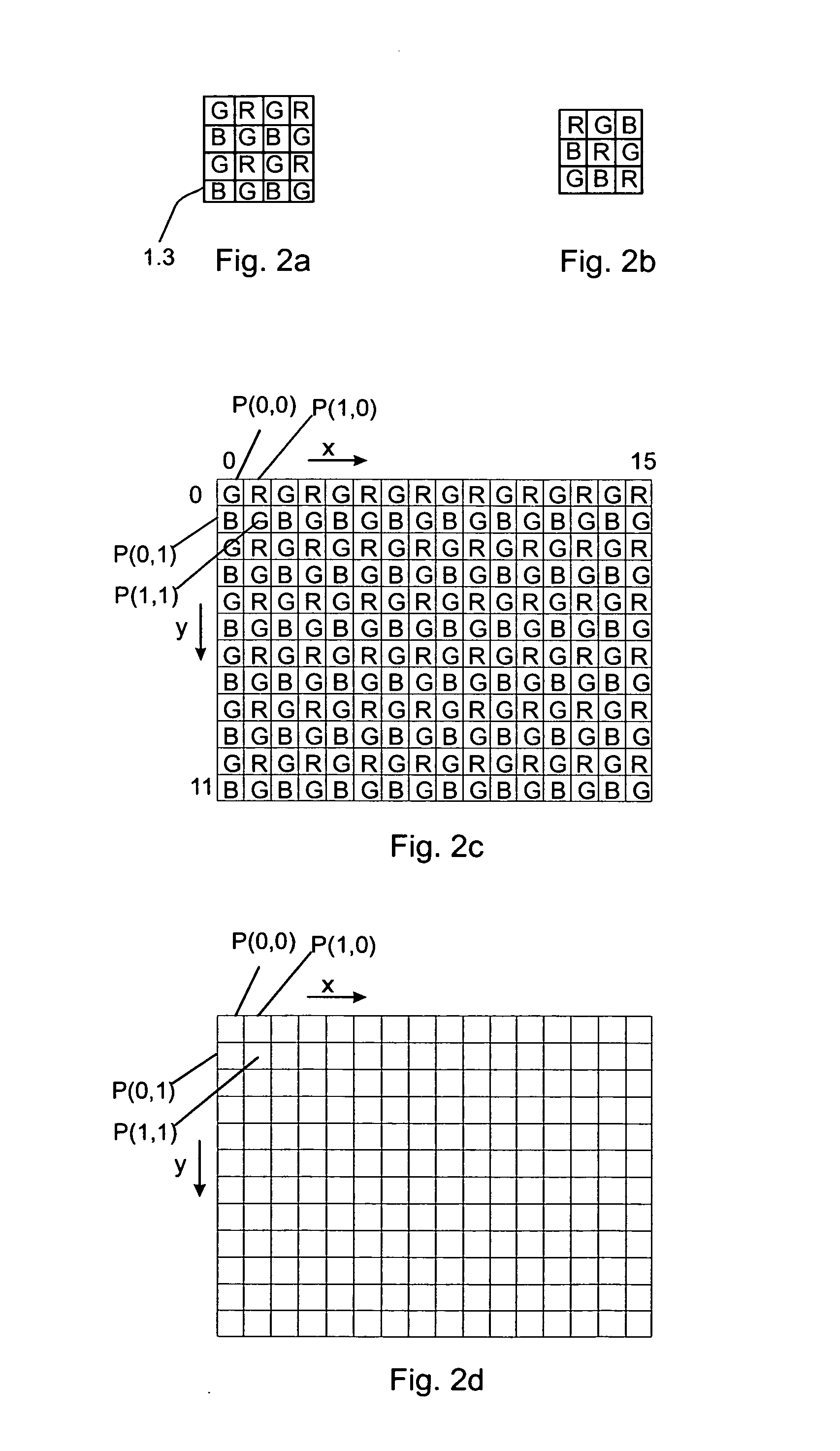Methods and apparatuses for encoding and decoding an image
a technology of encoding and decoding images, applied in electrical devices, instruments, computing, etc., can solve problems such as difficult line structure and not the best possible line structur
- Summary
- Abstract
- Description
- Claims
- Application Information
AI Technical Summary
Benefits of technology
Problems solved by technology
Method used
Image
Examples
example 1
[0100]Next, the encoding of the image in an encoding apparatus 10 of FIG. 3c will be disclosed using the Bayer image format shown in FIGS. 2a and 2c as an example of the filter array. In FIG. 4 the encoding method according to an example embodiment is depicted as a flow diagram. It is assumed that the original pixel values are 10 bits width and the purpose of the encoding is to reduce the bit width to 8 bits. However, these values are just non-limiting examples and also other values can be used instead (from 10 bits to 7 bits, from 12 bits to 8 bits, from 16 bits to 12 bits, etc.). In FIG. 2c pixels of one block of the image are shown. In the non-limiting example of FIG. 2c, the block has 12 rows and 16 columns. Letters R represent red pixels, letters G represent green pixels, and letters B represent blue pixels. For clarity, FIG. 2d shows the block of FIG. 2c without the letters R, G and B. For encoding the blocks of the image one or more synchronizing points (synchronizing pixels)...
example 2
[0116]In the second example embodiment a synchronization value is selected for each row of each block of the image. Hence, the first two pixel values of each row are used as synchronization values and the other pixels of the same row are predicted using the previous pixel values of the same row. Thus, the second predictor 17 (i.e. for the prediction in the vertical direction) is not needed. Otherwise the operation follows the principles presented above.
[0117]The decision whether to use only one starting point for each block or to use one starting point for each row of each block may be based on the features of these alternatives. If one starting point is used the encoding / decoding efficiency can be increased compared to the usage of multiple starting points, but if multiple starting points are used the robustness of the encoding / decoding apparatus can be increased compared to the usage of one starting point only.
[0118]In the above it was assumed that the first predictor 11 and the s...
PUM
 Login to View More
Login to View More Abstract
Description
Claims
Application Information
 Login to View More
Login to View More - R&D
- Intellectual Property
- Life Sciences
- Materials
- Tech Scout
- Unparalleled Data Quality
- Higher Quality Content
- 60% Fewer Hallucinations
Browse by: Latest US Patents, China's latest patents, Technical Efficacy Thesaurus, Application Domain, Technology Topic, Popular Technical Reports.
© 2025 PatSnap. All rights reserved.Legal|Privacy policy|Modern Slavery Act Transparency Statement|Sitemap|About US| Contact US: help@patsnap.com



